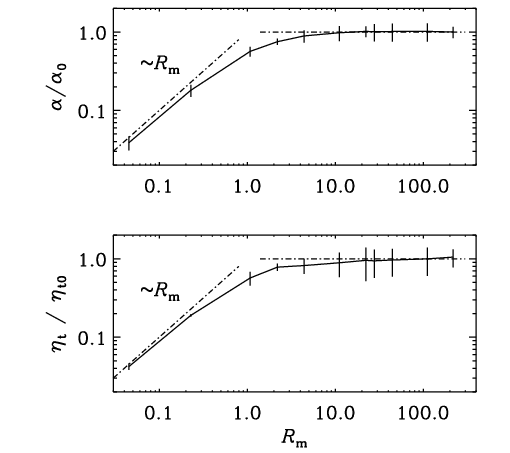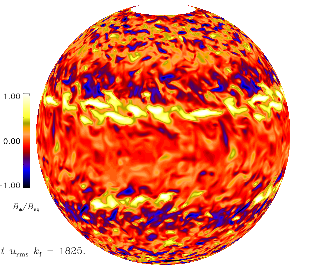Large-scale fields from shear-flow turbulence

Brandenburg, A., Rädler, K.-H., Rheinhardt, M., & Käpylä, P. J.: 2008, ``Magnetic diffusivity tensor and dynamo effects in rotating and shearing turbulence,'' Astrophys. J. 676, 740-751 (arXiv:0710.4059, ADS, PDF)
citations
90 on ADS,
97 on Google Scholar
Kinematic alpha effect in isotropic turbulence simulations

Sur, S., Brandenburg, A., & Subramanian, K.: 2008, ``Kinematic alpha effect in isotropic turbulence simulations,'' Monthly Notices Roy. Astron. Soc. 385, L15-L19 (arXiv:0711.3789, ADS, PDF)
citations
59 on ADS,
73 on Google Scholar
Large-scale dynamos in turbulent convection with shear

Käpylä, P. J., Korpi, M. J., & Brandenburg, A.: 2008, ``Large-scale dynamos in turbulent convection with shear,'' Astron. Astrophys. 491, 353-362 (arXiv:0806.0375, ADS, PDF)
citations
85 on ADS,
98 on Google Scholar
Cyclic magnetic activity due to turbulent convection in spherical wedge geometry

Käpylä, P. J., Mantere, M. J., & Brandenburg, A.: 2012, ``Cyclic magnetic activity due to turbulent convection in spherical wedge geometry,'' Astrophys. J. Lett. 755, L22 (arXiv:1205.4719, ADS, DOI, PDF)
citations
71 on ADS,
60 on Google Scholar
Detection of negative effective magnetic pressure instability in simulations

Brandenburg, A., Kemel, K., Kleeorin, N., Mitra, D., & Rogachevskii, I.: 2011, ``Detection of negative effective magnetic pressure instability in turbulence simulations,'' Astrophys. J. Lett. 740, L50 (arXiv:1109.1270, ADS, DOI, HTML, PDF)